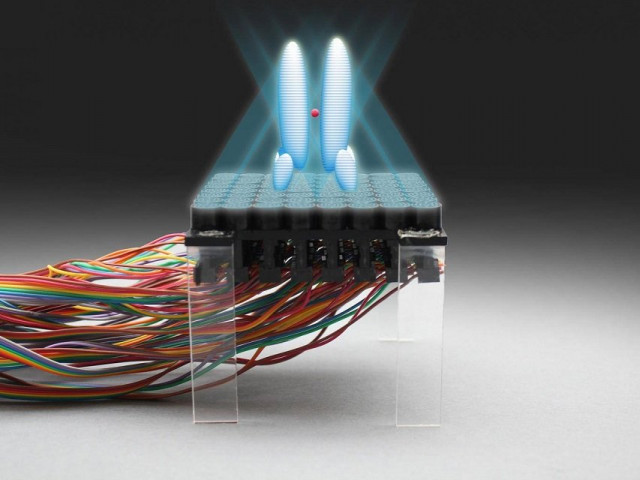British engineers find way to hold large objects in mid-air with sound
Previously acoustic tractor beams were thought to be limited to levitating small objects

PHOTO: INDEPENDENT
Researchers from the University of Bristol in southwestern England previously thought that acoustic tractor beams were limited to levitating small objects as all attempts to trap particles larger than the wavelength did not succeed, with objects spinning uncontrollably.
This is because rotating sound field transfers some of its spinning motion to the objects causing them to orbit faster and faster until they are ejected.
Mysterious loud boom puzzles people, experts across the globe
The new approach, to be published in Physical Review Letters on Monday, uses rapidly fluctuating acoustic vortices, which are similar to tornadoes of sound, made of a twister-like structure with a loud sound surrounding a silent core.
The Bristol researchers discovered that the rate of rotation can be finely controlled by rapidly changing the twisting direction of the vortices, and this stabilizes the tractor beam.
They were then able to increase the size of the silent core, allowing it to hold larger objects. Working with ultrasonic waves at a pitch of 40kHz which only bats can hear, the researchers held a 2-centimeter polystyrene sphere in the tractor beam.
US expert impressed with Pakistan’s tech industry
This sphere measures over two acoustic wavelengths in size and is the largest yet trapped in a tractor beam. The research suggests much larger objects may be levitated in this way in the future.
Asier Marzo, lead author of the paper from Bristol's Department of Mechanical Engineering, said: "Acoustic researchers had been frustrated by the size limit for years, so it's satisfying to find a way to overcome it. I think it opens the door to many new applications."



















COMMENTS
Comments are moderated and generally will be posted if they are on-topic and not abusive.
For more information, please see our Comments FAQ